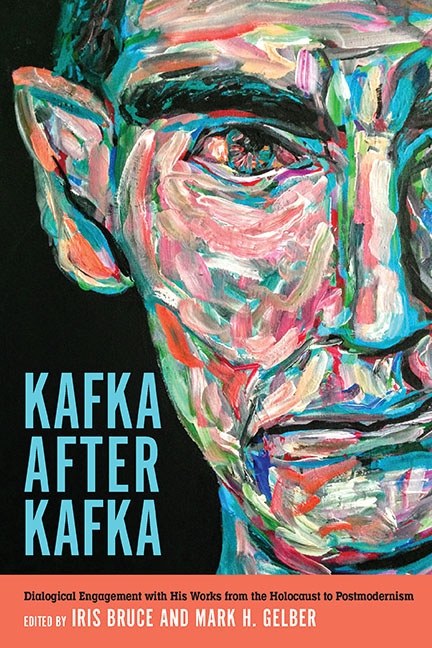Book contents
- Frontmatter
- Contents
- Acknowledgments
- Introduction
- Part I Philosophical and Literary Hermeneutics after the Holocaust
- Part II Kafka in Israeli Cultural Space
- Part III Kafka from Modernism to Postmodernism
- 8 The Beetle and the Butterfly: Nabokov's Lecture on Kafka's The Metamorphosis
- 9 “When the Still Image Projected on the Screen Bursts into Movement”: Cinematic Space-Time in Kafka's “A Country Doctor”
- 10 After the Animal: Kafka, Monstrosity, and the Graphic Novel
- 11 Kafkas after Kafka: Anglophone Poetry and the Image of Kafka
- Notes on the Contributors
- Index
8 - The Beetle and the Butterfly: Nabokov's Lecture on Kafka's The Metamorphosis
from Part III - Kafka from Modernism to Postmodernism
Published online by Cambridge University Press: 12 April 2019
- Frontmatter
- Contents
- Acknowledgments
- Introduction
- Part I Philosophical and Literary Hermeneutics after the Holocaust
- Part II Kafka in Israeli Cultural Space
- Part III Kafka from Modernism to Postmodernism
- 8 The Beetle and the Butterfly: Nabokov's Lecture on Kafka's The Metamorphosis
- 9 “When the Still Image Projected on the Screen Bursts into Movement”: Cinematic Space-Time in Kafka's “A Country Doctor”
- 10 After the Animal: Kafka, Monstrosity, and the Graphic Novel
- 11 Kafkas after Kafka: Anglophone Poetry and the Image of Kafka
- Notes on the Contributors
- Index
Summary
VLADIMIR NABOKOV'S LECTURE “Franz Kafka: ‘The Metamorphosis,’” one of the most famous and contentious pieces in his Lectures on Literature, invites a reading along the lines of a pattern underlying many of Kafka's stories: A man who relies on his stability and self-possession is confronted by a troubling creature. He tries to ward it off by any means at his disposal, but it eludes his efforts to control the situation. The man denies, up to the end, that the creature has any effect on him. The intensity of his resistance belies these claims, however, and conveys a profound insecurity that assumes a life of its own and cannot be reversed or curtailed. It becomes evident that the man's initial solidity, along with his sense of any stable reality, were never more than an illusion. Variations of this encounter occur throughout Kafka's work from his early “Description of a Struggle,” written between 1903 and 1907, to the final stories, written shortly before his death in 1924. In “The Worry of the House Father” (1919) Odradek, a small and mobile toylike spool, shakes the confidence of the paterfamilias, who tries in vain to remain the master of his house. Infected by Odradek's constitutive instability, the father, without admitting it, loses his autonomy and control. In “The Top,” written between 1917 and 1923, a philosopher, observing a children's toy, finds himself unable to grasp the object and ends up becoming a spinning top himself. The balls in the story about the elderly bachelor Blumfeld as well as the old molelike animal of “In Our Synagogue” (written in 1922) trigger disturbances that disrupt all that is solid, resist all efforts at control but ultimately open up self-enclosed spaces and moribund lives.
In “Conversation with the Supplicant,” one of Kafka's early stories (written around 1909), an initially confident and established protagonist becomes unnerved by the dark and fearful visions recounted to him by a strange figure. The story stages a dialogue in which the complacent firstperson narrator encounters a spectral man who is ecstatically gesticulating and praying in a church. This uncanny figure challenges the narrator to forego his illusions and face the insanity that lurks behind the façade of normality.
- Type
- Chapter
- Information
- Kafka after KafkaDialogic Engagement with his Works from the Holocaust to Postmodernism, pp. 143 - 154Publisher: Boydell & BrewerPrint publication year: 2019

